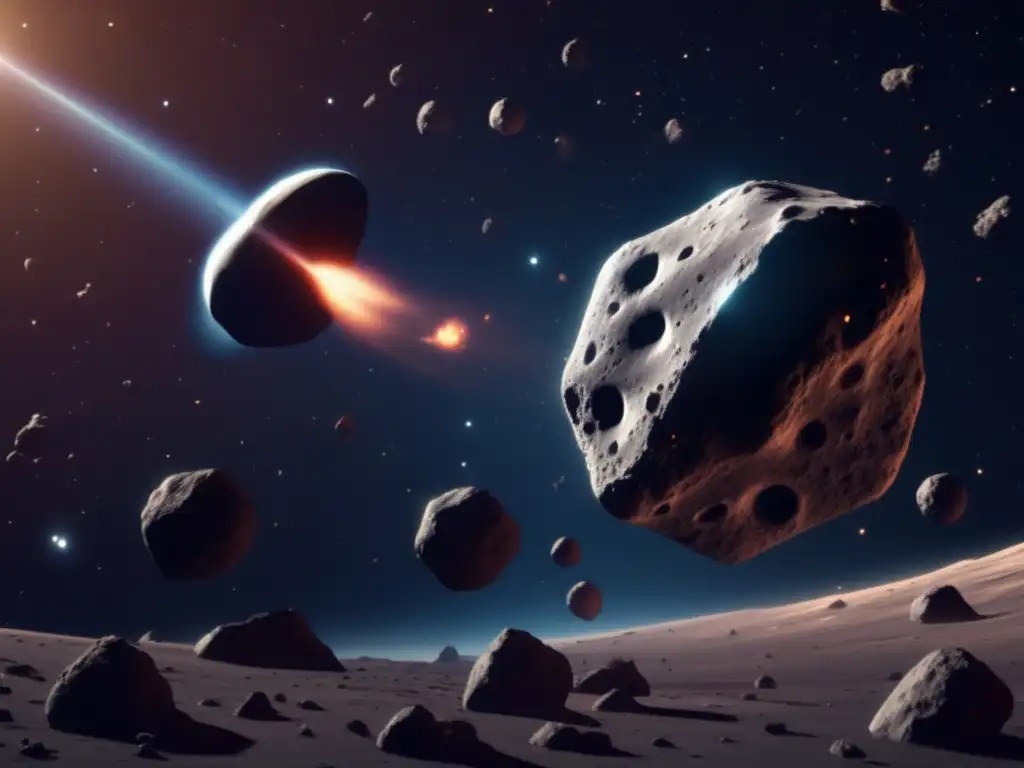Dodging Cosmic Bullets: Techniques For Asteroid Defense

Introduction
Asteroids have been a subject of fascination and trepidation since their discovery. While asteroids can provide insights into the history of our solar system, they also pose a significant threat to Earth. The damage caused by a near-Earth object impact can be catastrophic, causing an extinction-level event. To prevent this from happening, astronomers and space agencies worldwide are developing techniques for asteroid defense.
Mission Planning

Asteroid Detection
The first step in asteroid defense involves detection. To mitigate the threat posed by asteroids, it is imperative to detect them as early as possible. Scientists use a combination of ground-based telescopes, space-based observatories, and radar to detect and track asteroids. By detecting asteroids as early as possible, it becomes easier to predict their trajectories accurately, giving scientists ample time to initiate appropriate mitigation measures.
Trajectory Calculation
Trajectory calculation is a process of predicting the future path of an asteroid. It involves using observations made by telescopes and radars to calculate the asteroid's current position and velocity and using that information to determine its future path. The calculations obtained from trajectory calculation help scientists plan mitigation measures such as deflection and disruption.
Deflection and Disruption
There are two primary techniques for asteroid defense: deflection and disruption. Deflection involves changing the asteroid's trajectory such that it misses Earth, while disruption involves breaking up the asteroid into smaller pieces that will burn up upon entry into Earth's atmosphere. Both techniques require precise execution and planning.
Techniques for Asteroid Defense

Kinetic Impactor
The kinetic impactor is a spacecraft designed to deflect an asteroid by hitting it at high speed. The spacecraft is equipped with a kinetic energy penetrator that hits the asteroid's surface, imparting enough momentum to change the asteroid's trajectory. NASA's Double Asteroid Redirection Test (DART) mission is a prime example of a kinetic impactor mission. DART aims to deflect a small moon orbiting the asteroid Didymos in 2022.
Gravity Tractor
The gravity tractor is a spacecraft designed to deflect an asteroid using its gravitational pull. The spacecraft hovers near the asteroid, and its own gravitational pull tugs the asteroid off course. This technique is suitable for large or heavy asteroids that are difficult to deflect using kinetic impactors. NASA's Near-Earth Object Surveillance Mission (NEOSM) will use the gravity tractor technique to deflect asteroids away from Earth.
Laser Ablation
Laser ablation is a technique that uses high-energy lasers to vaporize and ablate material from the asteroid's surface. As the material is ejected from the asteroid, it creates a thrust that changes the asteroid's course. Laser ablation is suitable for small asteroids that cannot be deflected using kinetic impactors. The European Space Agency's Don Quijote mission aims to test the laser ablation technique in the future.
Civil Defense

Emergency Preparedness
Civil defense involves preparing for the worst-case scenario. If an asteroid is detected with insufficient time for mitigation efforts, civil defense becomes the only viable option. Emergency preparedness includes evacuation plans, emergency shelters, and disaster management strategies. The International Asteroid Warning Network (IAWN) and the United Nations' Office for Outer Space Affairs (UNOOSA) are working together to develop emergency plans for asteroid impact events.
Public Awareness
Public awareness campaigns play a crucial role in asteroid defense. By educating the public about asteroids, their potential impact, and mitigation strategies, we can minimize the damage caused by an impact event. Organizations like the B612 Foundation and NASA's Planetary Defense Coordination Office (PDCO) are leading the way in increasing public awareness of asteroids.
Frequently Asked Questions

-
How often do asteroids hit Earth?
Asteroids capable of causing significant damage hit Earth approximately once every few thousand years.
-
Can we destroy an asteroid?
While it is technically possible to destroy an asteroid, it is generally not advisable because it would result in multiple smaller asteroids that could still pose a threat to Earth.
-
What happens if an asteroid hits Earth?
The impact of a significant asteroid could cause catastrophic damage, including widespread destruction, fires, tsunamis, and climate change.
-
Can we predict when an asteroid will hit Earth?
Yes, scientists can predict when an asteroid will hit Earth with a high degree of accuracy using trajectory calculation techniques.
-
How are asteroid defense missions funded?
Asteroid defense missions are primarily funded by national space agencies such as NASA and ESA.
Conclusion
Asteroid defense is a crucial aspect of space exploration and protection of life on Earth. To effectively defend against asteroids, it is essential to detect them early, calculate their trajectories accurately, and initiate appropriate mitigation measures. With the recent advancements in asteroid detection and space technology, we are better equipped than ever to defend against potential asteroid impacts. Civil defense and public awareness campaigns are also crucial components of asteroid defense.
We encourage our readers to stay informed about the latest developments in asteroid defense and participate in efforts to increase public awareness. By working together, we can ensure that our planet stays safe from the cosmic bullets that occasionally come our way.
Additional Resources

- NASA Planetary Defense
- ESA Near-Earth Objects
- B612 Foundation
- NASA Center for Near-Earth Object Studies
 Staying Safe In The Cosmos: Strategies For Asteroid Defense
Staying Safe In The Cosmos: Strategies For Asteroid Defense Avoiding Extinction: Current Measures In Asteroid Defense
Avoiding Extinction: Current Measures In Asteroid Defense Fighting Back: The Science Of Planetary Defense
Fighting Back: The Science Of Planetary DefenseIf you want to discover more articles similar to Dodging Cosmic Bullets: Techniques For Asteroid Defense, you can visit the Planetary Defense category.
Leave a Reply

Articulos relacionados: